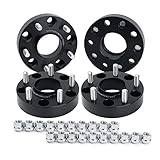Steering Feels Lighter After New Tires
Have you ever noticed your steering wheel feels lighter after getting new tires? This common experience often sparks questions about tire pressure, alignment, and more. This article will explore why this happens, examining the factors affecting steering feel and offering practical advice.
New tires, especially if
properly inflated, often result in a lighter steering feel. Under-inflated tires create more friction and resistance as they roll, demanding more effort from the driver to turn the steering wheel. Conversely, correctly inflated tires roll more smoothly, reducing this resistance. Think of it like pushing a shopping cart – a cart with stiff, slightly flat wheels is much harder to maneuver than one with smoothly inflated wheels. This effect is amplified at higher speeds where the rolling resistance plays a larger role. Many drivers notice the difference when switching to new tires that are inflated to the manufacturer’s recommended pressure, found in the owner’s manual or on a sticker inside the driver’s side doorjamb. This recommended pressure is a crucial factor for optimal handling and fuel efficiency, so it’s always worth checking. Regular monitoring of tire pressure is just as important as ensuring they are correctly inflated when new.
Tire Tread Depth and Steering Response
The depth of a tire’s tread also significantly impacts steering feel. New tires, with their deep, aggressive treads, provide superior grip, translating to improved responsiveness and a lighter steering effort. As tires wear down, the tread depth diminishes, reducing the contact patch with the road surface. Less contact means reduced grip and increased friction, resulting in a heavier steering feel. Think of it like trying to push a heavy object across a smooth surface versus a rough surface – the rough surface requires more effort. This increased friction necessitates more effort from the driver, creating that perceived “heaviness” in the steering. Worn-out treads not only increase steering effort but also compromise safety, reducing the vehicle’s ability to handle turns and braking effectively. Hence, regular tire tread depth checks, as well as timely replacement of worn-out tires are critical for safety and efficient vehicle control.
Wheel Alignment and Steering
Proper wheel alignment is another critical factor that influences steering feel. Misaligned wheels introduce extra friction and stress on the steering components. Misalignment can lead to various issues, from uneven tire wear to vibrations, and a noticeable increase in steering effort. Regular wheel alignments can effectively mitigate this and ensure a lighter and more responsive steering feel. Getting your tires rotated and your alignment checked every few months or at the mileage specified by your vehicle’s owner’s manual helps to reduce wear and tear and contributes to a smoother driving experience. The impact of wheel alignment on steering feel can be dramatic; a poorly aligned vehicle can feel significantly heavier to steer than a well-aligned one, even with brand-new tires.
Other Factors Influencing Steering Feel
Suspension System’s Role
The suspension system of your vehicle plays a major role in how the steering feels. Worn-out shocks or struts can result in a less responsive and potentially heavier steering feel. They damp vibrations but also significantly impact the road feedback. New suspension components often bring about a more precise and lighter steering experience, similar to how improved suspension components on a racing car offer better handling. This is because a well-maintained suspension system absorbs bumps and imperfections in the road more effectively, which reduces the amount of feedback transmitted to the steering wheel. Neglecting the suspension system can affect not only the steering feel but also impact your overall safety and comfort while driving.
Power Steering System’s Contribution
Modern vehicles are equipped with power steering systems to reduce the effort required to turn the steering wheel. However, even with power steering, the condition of the system can affect how it assists the steering effort. Issues such as low power steering fluid or a malfunctioning power steering pump will often make the steering feel much heavier. A new or recently serviced power steering system might lead to a smoother, lighter steering action. The power steering system is a crucial component for comfortable and efficient driving, and its regular maintenance ensures a consistent and responsive steering feel.
Tire Type and Construction
Different tire types and construction materials exhibit varying levels of rolling resistance. Performance tires designed for high-speed handling or improved grip will often have a slightly firmer steering feel compared to standard all-season tires. The construction of the tire itself, whether it uses reinforced sidewalls or more flexible materials, contributes to the interaction between the tire and the road.
Troubleshooting Steering Feel Issues
Diagnosing Steering Problems
If you’ve experienced a change in steering feel that is not attributable to new tires, a comprehensive inspection of the steering system is needed. This might entail examining the power steering fluid levels, the condition of the suspension components, and confirming that the wheel alignment is accurate. Professional diagnostics are highly recommended.
When to Seek Professional Help
A sudden and dramatic change in steering feel often indicates an underlying mechanical issue that needs the attention of a qualified mechanic. Attempting to fix these issues yourself could worsen the problem. Ignoring problems could lead to more costly repairs down the line, and more importantly, put your safety at risk.
Maintaining Optimal Steering Performance
Regular maintenance, including tire pressure checks, wheel alignments, and inspections of your suspension and power steering systems, is crucial for maintaining optimal steering feel and overall vehicle safety. Remember to refer to your vehicle’s owner’s manual for recommended maintenance schedules and intervals.
Tire Choice and Steering Responsiveness
Impact of Tire Brand and Model
Different tire brands and models differ in their construction, tread patterns, and compound materials. These differences directly affect the rolling resistance and ultimately influence the steering feel. Some tires are designed to provide a firmer, more responsive steering feel, while others prioritize comfort and a more relaxed driving experience. Research and comparison shopping are crucial when selecting tires. Understanding the characteristics of the tires will help you to choose a tire which suits your driving style.
All-Season vs. Performance Tires
All-season tires offer a balance between performance and comfort, while performance tires prioritize grip and handling. As mentioned earlier, performance tires can make the steering feel a bit more responsive, potentially firmer or lighter, depending on the particular design. All-season tires often provide a softer feel. The choice depends on your driving needs and priorities.
The Role of Tire Inflation Pressure
Optimum Tire Pressure and Handling
Maintaining the correct tire pressure is paramount for optimal vehicle handling and fuel efficiency. Under-inflation leads to increased rolling resistance and a heavier steering feel, while over-inflation can reduce comfort and tire life. The correct inflation pressure is specified in your vehicle’s owner’s manual or on a sticker usually found inside the driver’s side doorjamb. Consistent tire pressure monitoring is crucial for sustained safe and efficient driving. It can be a simple fix for steering that feels too heavy or unresponsive.
Effects of Underinflation and Overinflation
Under-inflation is a common cause of heavier steering. The tire sidewalls flex excessively, creating additional friction and resistance. Over-inflation can make the steering feel too firm or jittery, decreasing the car’s ability to absorb bumps and imperfections, again altering the responsiveness. The ideal tire pressure is a delicate balance, ensuring that tire life, handling, fuel consumption, and comfort are all adequately addressed. Regular checks are crucial for optimal performance.
Understanding Tire Wear and its Effects
Uneven Tire Wear and Steering Issues
Uneven tire wear can affect steering feel, often leading to a heavier and less responsive steering experience. Uneven wear patterns indicate potential alignment issues or other mechanical problems. Regular tire rotation helps to distribute wear evenly, preventing premature wear and maximizing tire lifespan. Ignoring uneven wear could lead to decreased safety, as well as premature wear.
Tire Age and Degradation
Even with proper maintenance, tires degrade over time, both in terms of their structural integrity and their tread depth. Older tires generally offer less grip and increased rolling resistance, influencing the steering feel, even if their tread depth is within acceptable limits. The age of the tire should be considered, alongside tread depth, in deciding when tire replacement is necessary. Ignoring the age of a tire might result in a dangerous situation.
Factors Beyond Tires Affecting Steering
Power Steering Fluid Levels
Low power steering fluid reduces the assistance from the power steering system, directly impacting steering effort. Regular checks of fluid levels and condition are vital for optimal power steering function. This is a simple check that should be performed regularly, to maintain optimal steering performance and safety.
Steering System Components
Worn-out or damaged steering system components, such as tie rod ends or ball joints, increase steering effort and can negatively affect handling. Regular inspections and timely replacements are crucial for maintaining safe steering. Neglecting this could lead to hazardous driving conditions.
Final Thoughts
The perception of lighter steering after new tires is often due to a combination of factors: correct inflation, improved tread depth, and the overall condition of the tires. While new tires are a major contributor to a lighter, more responsive steering feel, it’s essential to remember the roles of proper tire pressure, wheel alignment, suspension, and the power steering system. Regular maintenance of these components is crucial for optimal handling, comfort, safety, and fuel economy. Remember to always consult your vehicle’s owner’s manual for specific recommendations and maintenance schedules. By addressing these aspects proactively, you’ll not only enjoy a more pleasant driving experience but also enhance your vehicle’s safety and longevity.
Frequently Asked Questions
Why does my steering feel lighter after a tire rotation?
Tire rotation helps distribute wear more evenly across all four tires. If your tires were wearing unevenly before rotation (often due to alignment issues or other mechanical problems), a rotation can improve the contact patch between the tires and the road, leading to a slight improvement in steering feel. However, if the alignment itself is the root cause of the uneven wear, you will likely see the problem return if the alignment issue is not addressed.
Can low tire pressure cause lighter steering?
No, low tire pressure typically causes heavier steering, not lighter. Under-inflated tires create more friction and resistance as they roll, requiring more effort from the driver. It can also lead to unsafe handling and increased tire wear.
My steering feels lighter, but my tires aren’t new. What could be the cause?
Several factors could be responsible: a recent wheel alignment, increased tire pressure (though this wouldn’t make it significantly lighter), or even a minor repair to a power steering component. If the change is substantial and unexplained, a mechanic’s diagnosis is advisable.
Is it normal for steering to feel slightly different after new tires?
Yes, it’s quite common. New tires, with their deeper treads and proper inflation, typically result in a lighter and more responsive steering feel compared to worn-out tires. The difference can vary depending on the tire type, your vehicle, and other factors.
How can I determine if my steering feels too light or too heavy?
Compare the steering feel to how it felt before any recent changes – new tires, wheel alignment, etc. A significant deviation from the norm, especially if accompanied by other symptoms (e.g., unusual noises, vibrations), warrants a mechanic’s inspection. If you’re unsure, ask a trusted friend or family member to drive your car to get their opinion.
What is the recommended tire pressure for my car?
This information is typically found in your vehicle’s owner’s manual, on a sticker inside the driver’s side doorjamb, or on the fuel filler door. It’s crucial to maintain the recommended pressure for optimal performance and safety.
I changed tires but the steering still feels heavy. What should I do?
If you’ve replaced your tires and the steering still feels heavy, there’s likely an underlying issue. Factors to consider include wheel alignment problems, low power steering fluid, or issues with other steering system components. Professional diagnosis and repair are highly recommended.

David Peterson, the chief editor of sparepartscare. I am an automobile engineer and assign to an local firm with much experience in automobile equipment. During the time, most of my experience is related to the Industry of cars parts. I learned about the thing, when working with experienced inspectors, one must be as good as the inspector, or better, with knowledge of the project as well as the practical aspects of automobile industry.









